Abstract
In inoculated pack experiments on Clostridium botulinum type E, unirradiated and 0.1-Mrad irradiated haddock fillets often gave nonspecific toxicities by the mouse assay test for botulinum toxin. Samples given 0.2-Mrad radiation failed to produce nonspecific reactions. Nonspecific deaths sometimes occurred within 24 hr after injection, although deaths between 24 and 48 hr were more common. The symptoms and the pattern of these deaths suggested a septicemia. Heart-blood cultured from mice showing nonspecific symptoms indicated an infectious process. Among 23 isolates from the blood, eight were identified as Proteus vulgaris, two P. morganii, one P. rettgeri, one Providence subgroup B, two Aerobacter aerogenes, one Actinobacillus, three enterococci, one Alcaligenes marshalli, and four Erysipelothrix insidiosa. The E. insidiosa, Aerobacter, Providence group, and most of the Proteus isolates were infectious for mice when injected by the intraperitoneal route. But the enterococci, Alcaligenes, and Actinobacillus isolates were not infectious and probably represent secondary invaders. The cultural characteristics of the E. insidiosa isolates conform to those described in the literature, with the exception that the four strains grew in the temperature range 50 F (10 C) to 40 F (4.4 C). Nonspecific toxicities were avoided in assays for botulinum toxin by the protection of mice with chloramphenicol and oxytetracycline.
Full text
PDF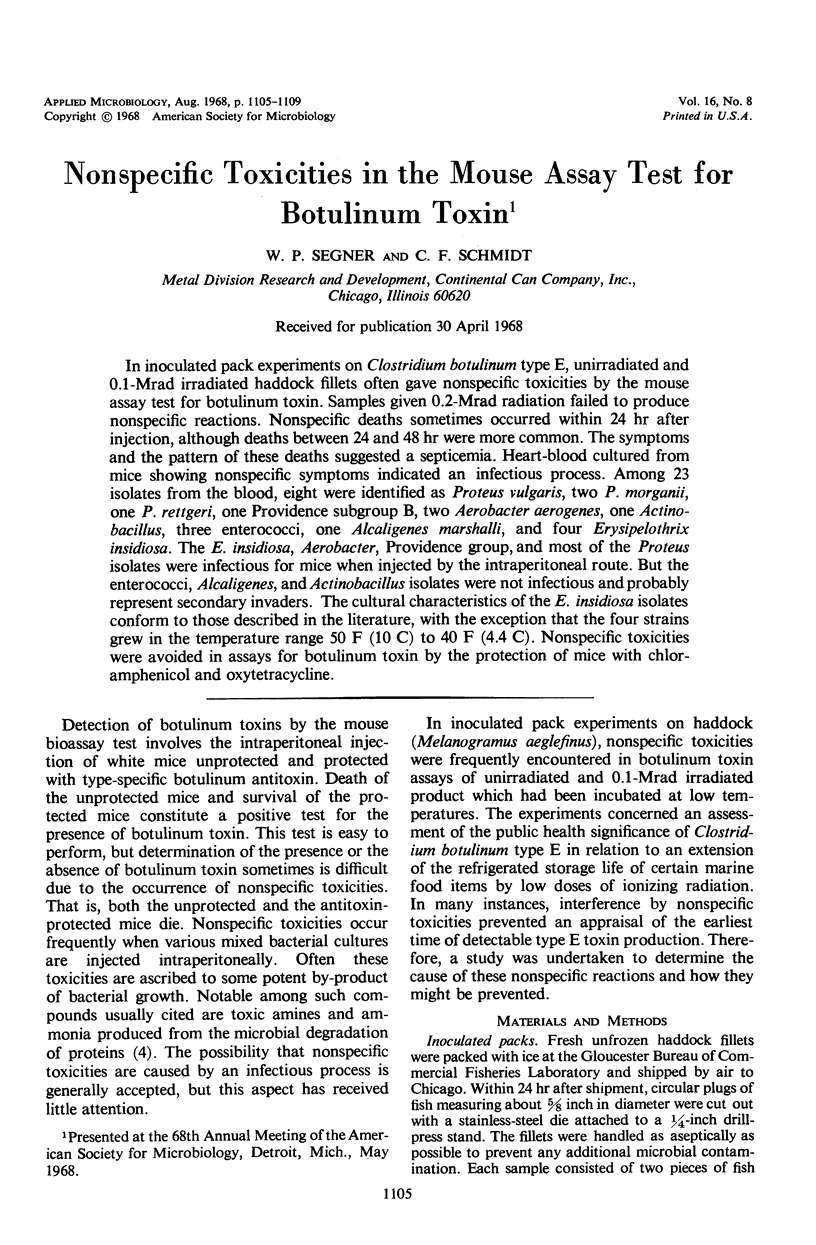
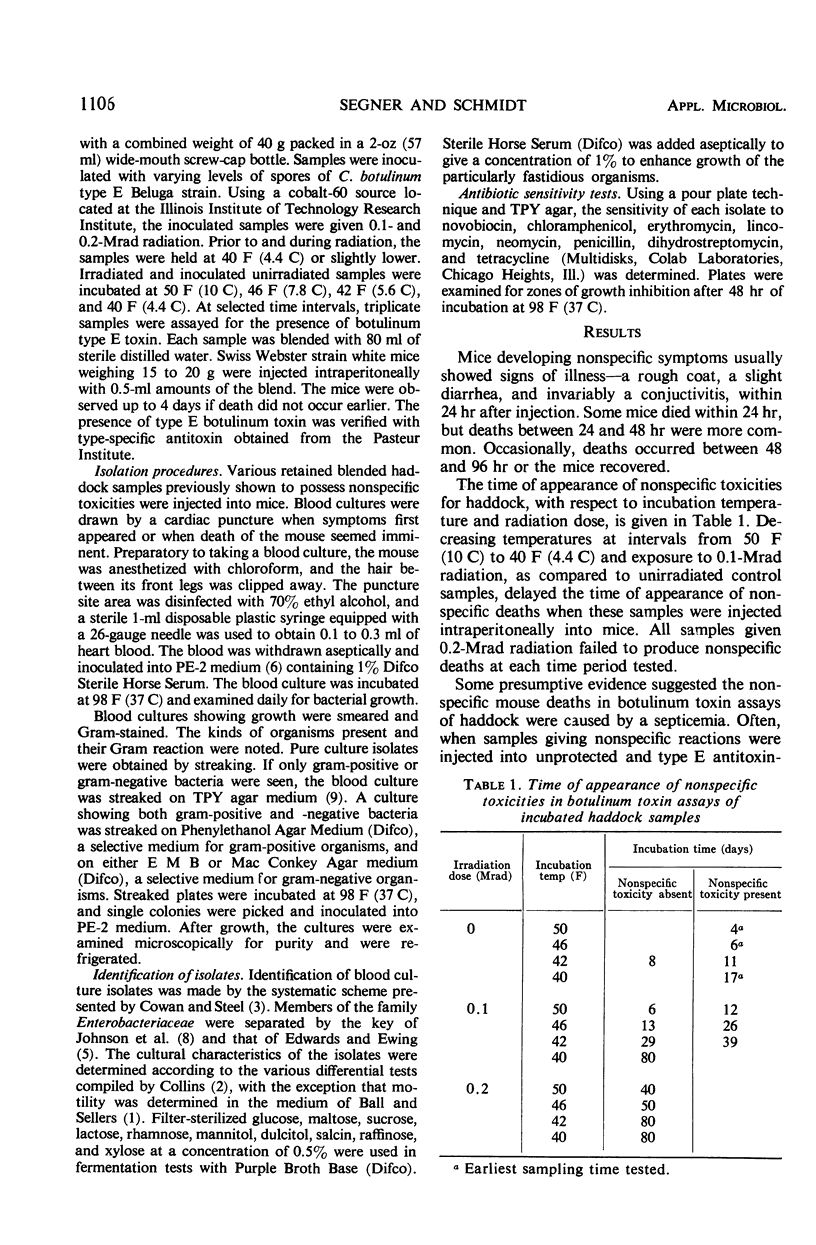
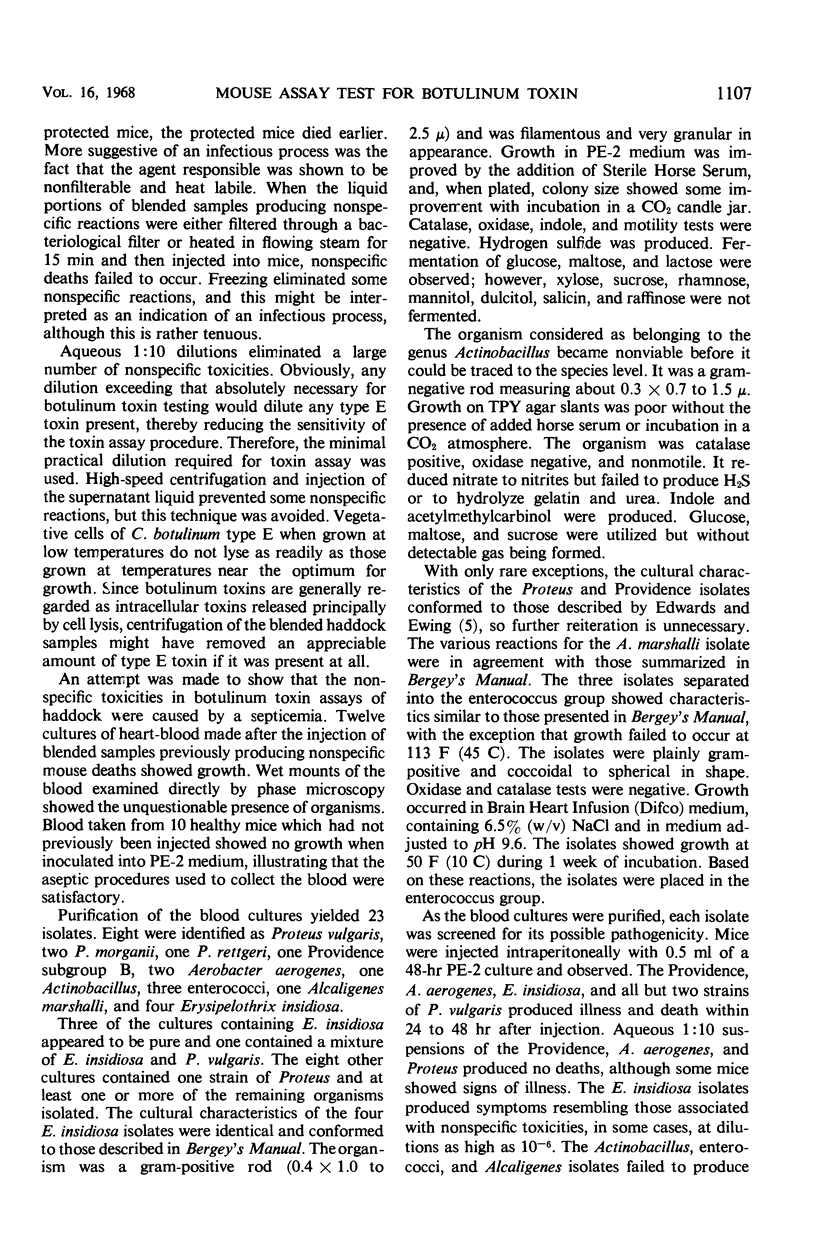
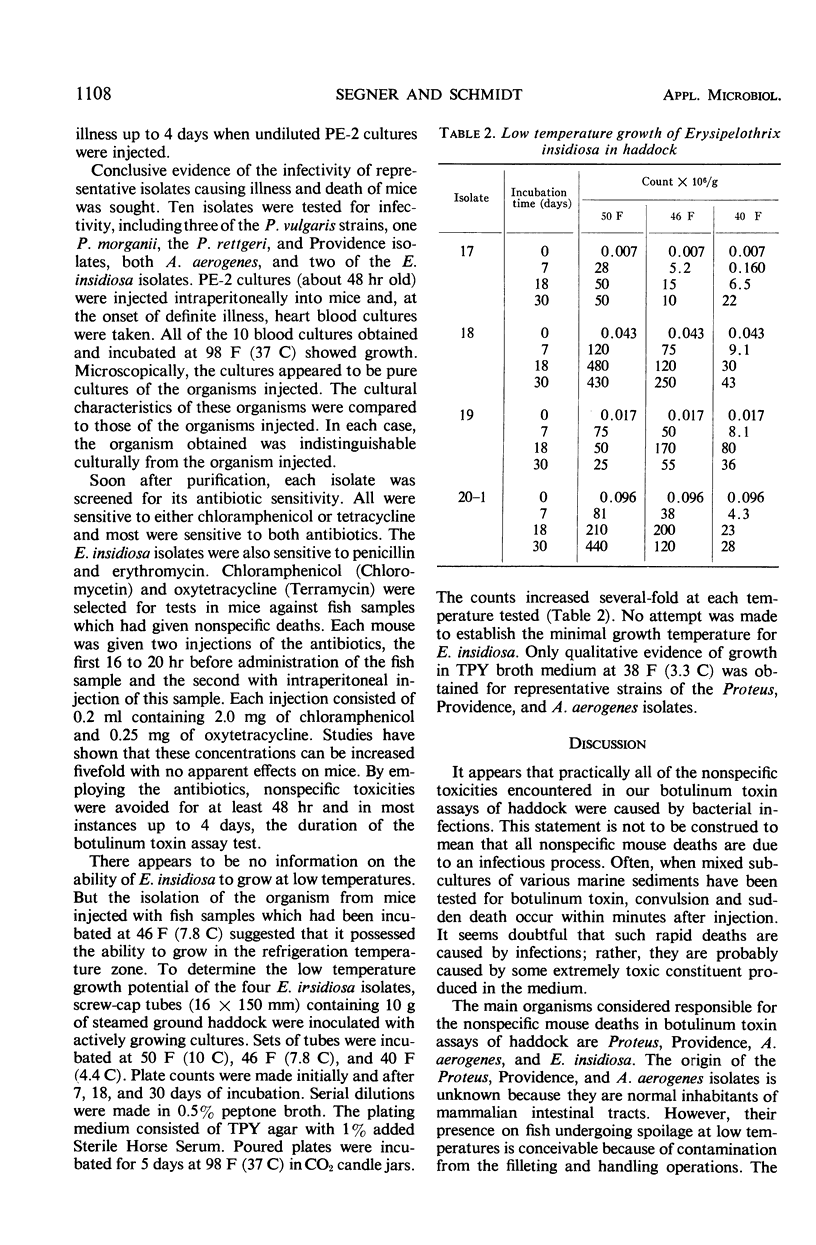
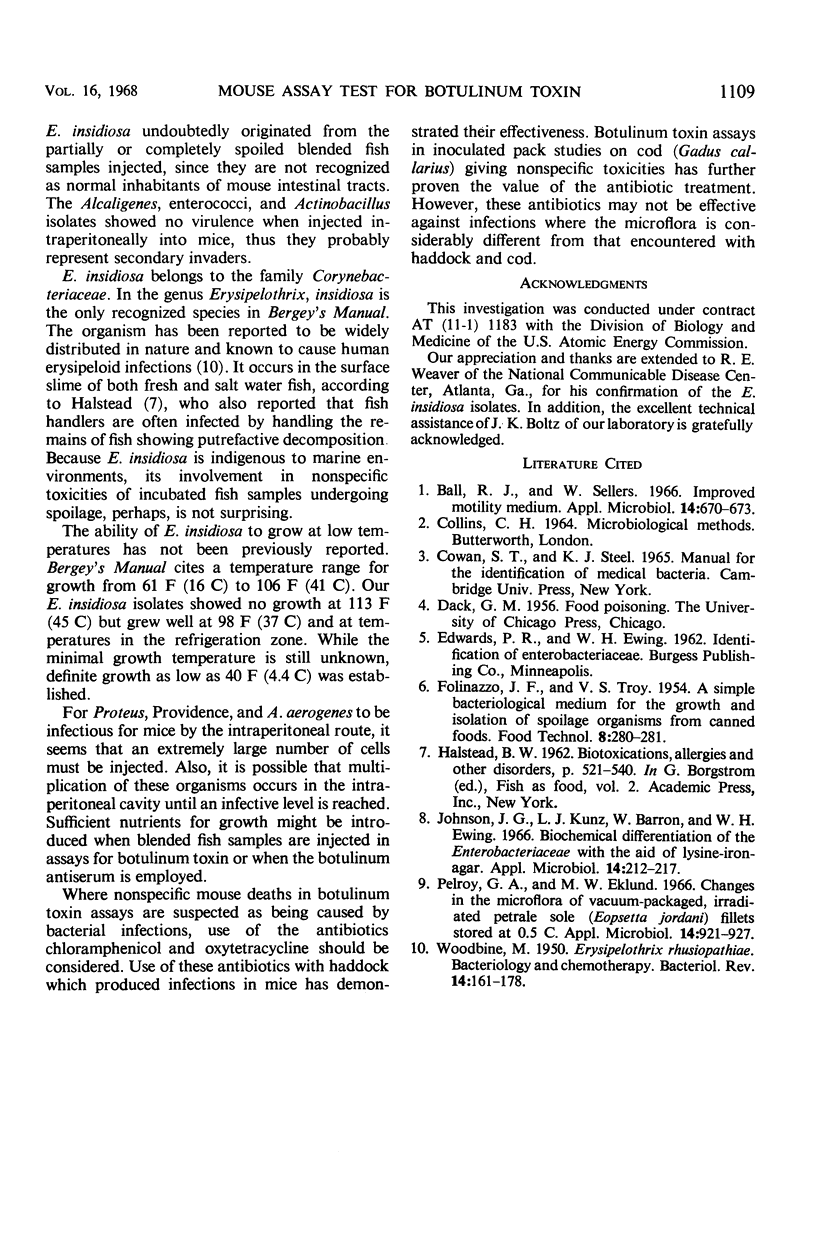
Selected References
These references are in PubMed. This may not be the complete list of references from this article.
- Ball R. J., Sellers W. Improved motility medium. Appl Microbiol. 1966 Jul;14(4):670–673. doi: 10.1128/am.14.4.670-673.1966. [DOI] [PMC free article] [PubMed] [Google Scholar]
- Johnson J. G., Kunz L. J., Barron W., Ewing W. H. Biochemical differentiation of the Enterobacteriaceae with the aid of lysine-iron-agar. Appl Microbiol. 1966 Mar;14(2):212–217. doi: 10.1128/am.14.2.212-217.1966. [DOI] [PMC free article] [PubMed] [Google Scholar]
- Pelroy G. A., Eklund M. W. Changes in the Microflora of Vacuum-packaged, Irradiated Petrale Sole (Eopsetta jordani) Fillets Stored at 0.5 C. Appl Microbiol. 1966 Nov;14(6):921–927. doi: 10.1128/am.14.6.921-927.1966. [DOI] [PMC free article] [PubMed] [Google Scholar]
- WOODBINE M. Erysipelothrix rhusiopathiae. Bacteriology and chemotherapy. Bacteriol Rev. 1950 Jun;14(2):161–178. doi: 10.1128/br.14.2.161-178.1950. [DOI] [PMC free article] [PubMed] [Google Scholar]


